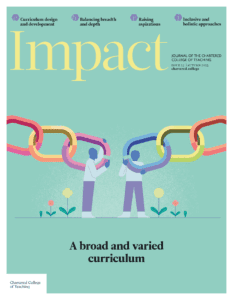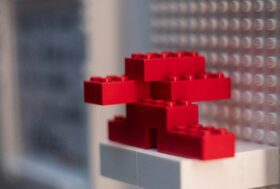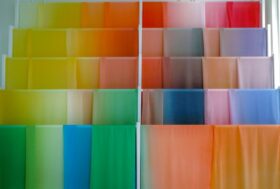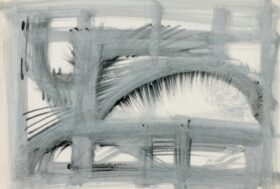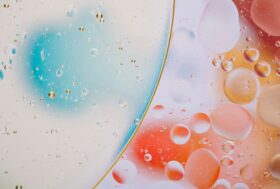Using multi-sensory drama to promote social and emotional learning in young people with SEND

FARZANA CHOWDHURY, ASSISTANT HEADTEACHER, BRAYS SPECIAL SCHOOL, UK
Introduction
The National Curriculum defines a framework for essential knowledge to develop educated citizens. Drama, recognised for fostering creativity, is considered non-compulsory, yet its importance is acknowledged in the English National Curriculum (DfEDepartment for Education - a ministerial department responsible for children’s services and education in England, 2014).
This research aims to demonstrate the effectiveness of multi-sensory drama (MSD) in enhancing social and emotional learning (SEL) for students with severe learning difficulties, incorporating insights from education practitioners in a SEND (special educational needs and disabilities) school. The school employs a thematic curriculum and features a dedicated MSD room, the ‘Creative Space’, which enhances immersive learning and fosters critical thinking, communication and SEL skills.
This study investigates the Creative Space as a means with which to enhance SEL skills among learners. Findings indicate that SEL skills were significantly developed within the Creative Space, with some evidence of skill transferThe processes of applying learning to new situations beyond MSD sessions, suggesting that MSD effectively nurtures curiosity and SEL competencies in learners with SEND.
Contextual literature
Despite limited empirical support (Carter and Stephenson, 2011), multi-sensory environments (MSEs) are internationally recognised for promoting social, emotional and mental health skills, addressing diverse learner needs in various educational contexts worldwide (Unwin et al., 2021).
The DfE (2015) recommends MSEs to meet diverse learner needs. Studies show that MSEs can support self-management in students with SEMH (social, emotional and mental health) difficulties (Cavanagh et al., 2018) and enhance engagement and learning opportunities (Hill et al., 2012). However, the generalisability of findings is often questioned, due to small sample sizes.
Research by Unwin et al. (2021) highlights improved attention and communication in autistic students within MSEs, but questions remain about the transferability of these skills. While some studies found no significant long-term benefits (Ahmed and Khasawneh, 2024), Al-Shahrani (2023) reported significant positive impacts on cognition and emotional skills among students with SEND in MSEs, underscoring the need for rigorous research.
SEL skills
Social and emotional development is a prime learning area in the Early Years Foundation Stage, highlighting its importance for lifelong skills (DfE, 2014). However, as children progress, the emphasis shifts to a ‘knowledge-rich curriculum’ (Gibb, 2021). Educators and policymakers increasingly acknowledge the necessity of teaching these non-academic competencies (Early Intervention Foundation, 2015). While definitions of SEL vary, they generally encompass personal and social skills developed through ongoing learning. Watts and Pattnaik (2022) label these as ‘skills for life and work’, advocating for holistic, play-centred approaches in schools.
UK schools implement SEL programmes like Jigsaw (Jigsaw PSHE, 2024) to enhance emotional intelligence and social skills. However, these programmes alone are insufficient; SEL must be integrated into the curriculum with a tailored and flexible approach for effective skill development (Payne, 2024).
Multi-sensory drama and the creative space
Multi-sensory drama (MSD) is a specific type of MSE, designed to create interactive sensory experiences for children with SEND. Unlike conventional drama, MSD incorporates components of sight, smell, touch, taste and sound to provide inspiring learning opportunities to create inclusive learning environments that foster social skills and emotional growth (Frydman and Mayor, 2023).
The Creative Space is a unique MSE designed around the school’s curriculum themes, evolving weekly to create immersive experiences for students with SEND. It incorporates drama, improvisation and music to foster play, communication and adaptability. Distinctly, it emphasises exploration without fixed narratives, allowing each student to engage personally. The space caters to various sensory languages; for instance, a theme like ‘ice world’ transforms the room into an Arctic adventure, accommodating all types of communication methods. This approach nurtures curiosity, problem-solving and SEL in an innovative way.
The current study aims to investigate the effectiveness of the Creative Space in enhancing SEL skills in students with SEND and whether these skills can transfer beyond the MSE. This research seeks to fill gaps in understanding the impact of MSEs on SEL development.
Methodology
Research methods and design
A mixed-methods approach was adopted, combining quantitative and qualitative data to provide a comprehensive understanding of the research questions. The research comprises two elements: first, quantifying SEL skills observed during MSE sessions and classroom activities; and second, conducting observations during MSE sessions and semi-structured interviews with experienced educators.
Data collection
Structured observations were used to measure SEL skills in both MSE and classroom environments. The Creative Space, associated with the school’s thematic curriculum, provides a familiar setting for students, facilitating natural behaviour observation. Weekly observations during ‘free play’ were also conducted to assess the long-term impact of MSE sessions on SEL skills. An observation schedule based on the OECD’s ‘Big Five’ model of SEL skills (OECD, 2024) was employed to ensure reliable data collection.
Field notes were taken to complement structured observations and provide richer context for understanding SEL impacts. Semi-structured interviews were conducted with teaching professionals to gather in-depth insights into their experiences with MSEs. See the online version of this article for examples of the interview prompts (my.chartered.college/impact).
The study included both Key Stage 2 students with SEND (n = 5) and teaching staff (n = 4). Ethical considerations were taken to ensure informed consent, participant privacy and parental consent for vulnerable children, with all participants informed of their right to withdraw.
Data analysis
Quantitative data analysis
Structured observation data was entered into Microsoft Excel to identify patterns in SEL skills over a five-week period. Results showed that cooperation, curiosity, critical thinking and creativity were most prevalent in the Creative Space, while cooperation, responsibility, stress resistance and emotional control were more common during free play. Notably, all 19 OECD SEL skills were demonstrated. Both environments exhibited high cooperation but low empathy and self-efficacy. The differing types and frequencies of SEL skills suggest that those developed in the Creative Space may not transfer to free play.
Qualitative data analysis
The constant comparative method (Glaser, 1965) was employed, ultimately enabling the formation of three core themes. The analysis revealed connections between interview discussions and core OECD SEL skills, enhancing the understanding of SEL development in different contexts.
Research findings
Three key themes emerged from the analysis of semi-structured interviews and observations of Creative Space sessions.
Core theme 1: Exploration and discover
Practitioners noted that MSD sessions encouraged curiosity and provided a free-flow learning environment.
- sub-themes: nurturing curiosity, alternative learning environment
- key codes: child-led learning, endless possibilities, immersive experience.
Core theme 2: Supported learning and adaptation
In discussions about the role of educators in facilitating learning, practitioners expressed the importance of guiding students with SEND while allowing them to explore independently.
- sub-themes: challenges, guided learning
- key codes: abstract outcomes, facilitated learning.
Core theme 3: Impact on SEL skills
Practitioners observed that the environment fostered key SEL skills.
- sub-themes: engaging with others, emotional regulation, collaboration
- key codes: turn-taking, cooperation, problem-solving.
Overall, the findings indicate that the Creative Space significantly enhanced exploration and supported learning and SEL skills in students with SEND, providing them with valuable experiences that extended beyond the sessions.
Discussion
Quantitative findings indicate that all OECD SEL skills are fostered within the Creative Space, with high levels of cooperation observed in both environments. However, SEL skills such as optimism, curiosity, sociability and critical thinking were more prevalent in the Creative Space, while responsibility, stress resistance and emotional control were noted during free play. This disparity highlights the unique contributions of each setting to SEL skill development.
Qualitative data analysis reveals that practitioners believe that MSEs enable learners to develop SEL skills through child-led exploration in immersive environments. This aligns with previous studies, such as that of Cavanagh et al. (2018), which emphasise the unique and engaging nature of MSEs that allows for focused exploration.
The quantitative and qualitative evidence suggests that learners with SEND actively engage in a wide range of SEL experiences in MSD sessions. Practitioners reported that the Creative Space nurtures curiosity and SEL skills, although the effectiveness of child-led learning varies depending on adult facilitation. The study connects to Vygotsky’s zone of proximal development (1978), emphasising the importance of skilled adult support in enhancing learners’ engagement in SEL activities.
While the quantitative data suggests that children did not often apply their skills outside of the MSE sessions, practitioners shared qualitative observations showing that SEL skills were being used in other settings, such as playground interactions.
Implications for future research
While the study acknowledges limitations due to its small scale and the potential lack of generalisability of findings, it serves as a foundation for larger research efforts into a niche area. Future research should involve a broader participant base and consider the inclusionAn approach where a school aims to ensure that all children are educated together, with support for those who require it to access the full curriculum and contribute to and participate in all aspects of school life of student voice. Expanding the focus to include different categories of SEND could also enhance understanding MSEs’ effects on SEL skills.
Implications for teachers
This research offers valuable insights into the role of multi-sensory environments in supporting social and emotional learning among learners with SEND. With thoughtful adaptations and skilled adult facilitation, MSEs can become powerful educational tools – not only nurturing SEL skills but also enriching children’s cultural capital. Much like books, MSEs provide children with ‘windows to other worlds and mirrors to their own’ (Bishop, 1990), offering immersive experiences that foster empathy, self-awareness and curiosity. By embodying the thematic approach and awakening the senses, MSEs have the potential to unlock limitless opportunities for meaningful, inclusive play and exploration.
Conclusion
The Education Endowment Foundation (EEF, 2021) outlines three intervention stages for SEL development: whole-school approach, universal classroom programmes and targeted interventions. The Creative Space supports all three stages by modelling a positive school ethos, providing dedicated class time and offering targeted SEL opportunities. While this research has yielded valuable insights, further exploration of social pedagogical practices is needed to enhance SEL for learners with SEND.
The author declares that there are no conflicts of interest related to this article. However, it is important to note that the school has a professional affiliation with Harry Dawes, a creative consultant who is involved in creating immersive environments. This relationship does not influence the research findings or conclusions presented in this article.
- Ahmed M and Khasawneh S (2024) The role of the multi-sensory environment in developing learning skills among students with learning difficulties in the Asir Region. Kurdish Studies 12(1). DOI: 10.58262/ks.v12i1.131.
- Al-Shahrani O (2023) The role of the multisensory environment in developing the learning skills of those with learning difficulties in Saudi Arabia from the point of view of their teachers. Journal of Special Education and Rehabilitation 15(54): 87–137.
- Bishop RS (1990) Mirrors, windows, and sliding glass doors. Perspectives: Choosing and Using Books for the Classroom 6(3): 9–11.
- Carter M and Stephenson J (2011) The use of multi-sensory environments in schools servicing children with severe disabilities. Journal of Developmental and Physical Disabilities 24(1): 95–109.
- Cavanagh B, Haracz K, Lawry M et al. (2018) It’s like another world: The perceived beneficial effects of an artistically designed multisensory environment. Medical Humanities 45(1): 52–59.
- Department for Education (DfE) (2014) The national curriculum in England: Key stages 1 and 2 framework document. Available at: https://assets.publishing.service.gov.uk/media/5a81a9abe5274a2e8ab55319/PRIMARY_national_curriculum.pdf (accessed 18 July 2025).
- Department for Education (DfE) (2015) Area guidelines for SEND and alternative provision: Including special schools, alternative provision, specially resourced provision, and units. Available at: https://assets.publishing.service.gov.uk/media/5f23ec4e8fa8f57ac968fb11/BB104.pdf (accessed 18 July 2025).
- Early Intervention Foundation (2015) Social and emotional learning: Skills for life and work. Available at: www.eif.org.uk/report/social-and-emotional-learning-skills-for-life-and-work (accessed 12 April 2025).
- Education Endowment Foundation (EEF) (2021) Social and emotional learning. Available at: https://educationendowmentfoundation.org.uk/education-evidence/teaching-learning-toolkit/social-and-emotional-learning (accessed 12 April 2025).
- Frydman JS and Mayor C (2023) A scoping review on the use and potential of school-based drama therapy to enhance socio-emotional skills in early childhood. Early Childhood Education Journal 52: 669–680.
- Gibb N (2021) The importance of a knowledge-rich curriculum. Department for Education. Available at: www.gov.uk/government/speeches/the-importance-of-a-knowledge-rich-curriculum (accessed 12 April 2025).
- Glaser BG (1965) The constant comparative method of qualitative analysis. Social Problems 12(4): 436–445.
- Hill L, Trusler K, Furniss F et al. (2012) Effects of multisensory environments on stereotyped behaviours assessed as maintained by automatic reinforcement. Journal of Applied Research in Intellectual Disabilities 25(6): 509–521.
- Jigsaw PSHE (2024) Homepage. Available at: https://jigsawpshe.online (accessed 12 April 2025).
- OECD (2024) Social and emotional skills for better lives: Findings from the OECD survey on social and emotional skills 2023. Available at: www.oecd.org/content/dam/oecd/en/publications/reports/2024/04/social-and-emotional-skills-for-better-lives_7af2f463/35ca7b7c-en.pdf (accessed 18 July 2025).
- Payne L (2024) Effectiveness of social and emotional learning practises for middle school students with ASD as rated by educators: A Delphi study. Dissertation, University of Memphis, USA. Available at: https://digitalcommons.memphis.edu/cgi/viewcontent.cgi?article=4660&context=etd (accessed 18 July 2025).
- Unwin K, Powell G and Jones C (2021) A sequential mixed-methods approach to exploring the experiences of practitioners who have worked in multi-sensory environments with autistic children. Research in Developmental Disabilities 118: 104061.
- Vygotsky L (1978) Mind in Society. Cambridge, MA: Harvard University Press.
- Watts R and Pattnaik J (2022) Perspectives of parents and teachers on the impact of the COVID-19 pandemic on children’s socio-emotional well-being. Early Childhood Education Journal 51(1). DOI: 10.1007/s10643-022-01405-3.
